Tristan Osborne, Labour MP for Chatham and Aylesford, inquired about measures taken by the Ministry of Defence to bolster the UK’s involvement in the international F-35 Lightning II programme, according to a written question and answer.
Responding on 5 February 2025, Minister of State for the Ministry of Defence, Maria Eagle, emphasised that “The F-35 programme is not a workshare programme. It is a competitive international supply chain where F-35 work is won and secured on merit.” She added that “The UK has been successful in securing F-35 work to date and are well placed to secure work in the future.”
Citing data from Lockheed Martin and the Joint Program Office, Eagle noted ta somewhat disputed figure, “approximately 15% of every F-35 aircraft delivered globally is manufactured by UK companies.”
She highlighted a range of F-35 components produced in Britain, including rear fuselages, batteries, ejector seats and actuators, stressing that the UK’s design authority for these parts “secures highly skilled jobs within the UK and provides significant economic benefit.”
The minister confirmed that the domestic contribution involves “over 100 UK-based Tier 1 suppliers and has created over 20,000 jobs in the UK.”
Although the programme does not operate on a formal workshare basis, the government remains confident that British industry will continue to compete successfully for future contracts to support the global F-35 fleet.
At the UK Defence Journal, we aim to deliver accurate and timely news on defence matters. We rely on the support of readers like you to maintain our independence and high-quality journalism. Please consider making a one-off donation to help us continue our work. Click here to donate. Thank you for your support!


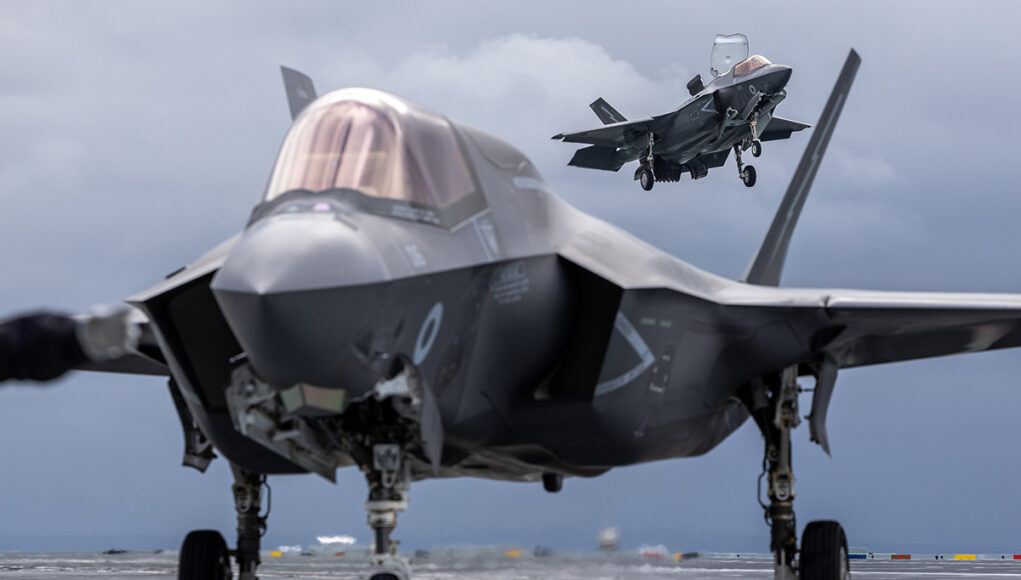
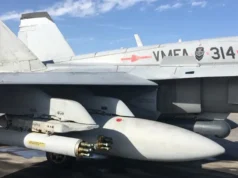

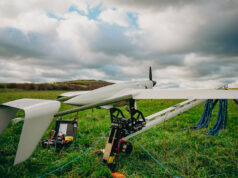
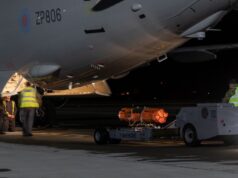
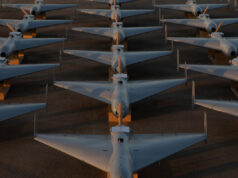
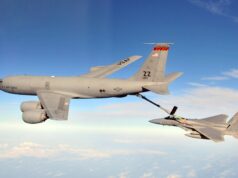
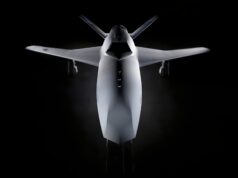

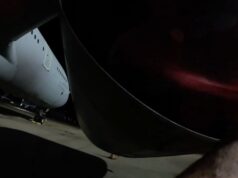
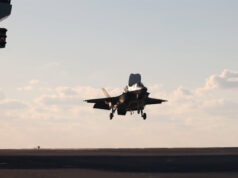

The UK is a Tier 1 Partner in the programme. Surely that should guarantee some leverage in supply?
I note Australia has all their 72 F-35A’s. Whereas the UK is bimbling with just 35 aircraft.
Another programme where the UK has invested a lot but come worse off than others. It is like a project run by the French!
If we had all 72 then something would have had to go to pay for the purchase, pilot testing and running costs.
Budgets are just too tight.
Going from 2.3 -> 2.5% sounds a lot but is about £4-5Bb/yr
So each service gets £1Bn after overhead and NE eat their shares.
So what does £1Bn/Yr buy you? That has to include the increased running costs too.
OK a lot of running costs are non linear but are tested as linear when dealing with the pitiful number of anything UK now has. Essentially everything is being run below the optimum point on the economy of scale curve. There is an upper bound too where mass starts to add layers of bureaucracy.
The UK chose to forgo early deliveries at the request of the USMC and to the relief of the MOD budget.
Aah I was about to say that supply of the B version was restrained and that even the Marines were not getting them as fast as planned. Had we ordered some A versions I suspect we could have had plenty of them… IF we had wanted them. I suspect the current scenario suits the Govt while protecting us from being accused of not fulfilling commitments.
Also to UK advantage to take TR3 new build rather tthan earlier batches then have to upgrade with operational impacts too.
To be fair their Hornets/Super Hornets were getting to end of life for the most part. We have a core Typhoon force that’s our workhorse with a lot of life left in it yet whatever the argument oaround ordering more.
The superhornet is not getting to the end of its life. The last buy hasn’t even started production yet.
Yes and of the 35 acquired one has crashed and 4 more are test aircraft based in the US. That leaves a measly 30. The actually numbers available for immediate operational use would be somewhat lower due to scheduled and unscheduled maintenance, repairs and upgrades. Originally Britain spoke of acquiring 150 aircraft. This became 138 and now they are talking just over half those numbers which would in insufficient to fully equip Britain’s 2 aircraft carriers yet alone deployments elsewhere. Discussions now appears to be about putting drones on the carriers together with smaller numbers of F35B’s. Cost savings and less pilots needed.
There’s only 1 test aircraft now, the 3 older ones are being rigged for combat
DM hates anyone else commenting on here. He has just got many posters deleted. FUCK OFF DM. lol.
Wow….you strung that together all by yourself….
And most of Australia’s F35s will require major upgrading. The benefits to the UK go well beyond the number of aircraft on order in service.
Yes, we paid good money back in the day for Tier 1 status. I don’t believe we have such a facility here though, apart from the Sealand site for the avionic side.
Hmm, hit that chaff dispenser DM. Bogey at 6! Lol 😁. 😉🕳️Btth.
“range of F-35 components produced in Britain, including rear fuselages, batteries, ejector seats and actuators” i find it hard to believe that this work represents 15% of the workshare/value on all F35 variants.
This may have been true in the early days of the JSF program when it was in development and there were plans for a UK F136 engine, which ended up being cancelled.
The real money is in the engines, avionics and weapon systems. Furthermore the biggest cash cow is lifetime upgrades & maintenance (easily 2 to 3 times the flyaway costs), not in rear fusleage pieces etc… even the wings represent more workshare than those pieces.
Possibly other items UK made but secret.
I suspect there is some muddying with parts made by uk companies in the US or even elsewhere.
There was a really interesting article a couple years ago from Francis Tusa (who knows his onions about the uk aerospace industry). He did some detailed analysis, and reckoned the UK input into the F35 was more in the 8 to 9 % range…
I reckon that is probably more like it though has probably varied during the programme. I was checking the lift system for example as RR has overall responsibility for it but which seems a complicated blend of interests. Though not RR in concept design (Lockheed originally) they took over responsibility for it early on and overall development occurred in Bristol then further through Allison and now shares parts between its uk and American sites with final build in the US so what share do you give that I wonder, obviously changed over time too.
I took this from Janes. It’s from 24 January 2024.
The value of the F-35 programme to the economy of the United Kingdom is now “significantly higher” than it was just a few years ago, Lockheed Martin has said.
Speaking to journalists on 24 January, the chief executive of Lockheed Martin UK, Paul Livingston, said that a new economic impact analysis of the international F-35 programme will show that its contribution to the UK has risen significantly since the last such assessment released in December 2020.
“I have just seen an early version of it today, but we have refreshed our economic impact analysis of what the F-35 brings to the United Kingdom,” Livingston said. “A few years ago, when we last published those figures, we said 15% of each F-35 was built by UK companies. Well, that is now a significantly higher number today. I can’t give a number right now, but it is significantly higher!”
In the December 2020 report commissioned by Livingston’s predecessor, Pete Ruddock, KPMG International Limited assessed that the F-35 programme would contribute GBP40 billion (USD54 billion at the time) in Gross Value Added (GVA) to the UK Treasury from 2007 to 2038 (GVA is the contribution made to an economy by a single organisation, industry, or sector). The study considered directly managed Lockheed Martin contracts in the UK, and did not include additional added economic value from other companies such as BAE Systems, Rolls-Royce, and General Electric.
It might be outdated now as it’s over a year old.
The F136 involved Rolls Royce but not the UK.
Don’t think that is quite true RR entered the programme before Allison was absorbed and designed the fan for the engine GE and Allison the rest.
As regards UK manufacturing involvement, it is my understanding that the laser target designator system for the F-35 is a Leonardo product, designed and built in Edinburgh, but I stand ready to be corrected.
When the Tier 1 status was negotiated I cannot believe Lockheed wasn’t influenced on our intention buy 138 F35Bs which at the time was the largest overseas purchase of F35Bs. Since then the UK has slowed its deliveries – I would like to think it was MOD being clever realising that not surprisingly the software updates were taking much longer than was planned and therefore in the long term its better for the UK to get the later more capable aircraft. The cynic in me says it was all a fortunate accident, the real reason was the MOD was trying to push out the deliveries to match the available funding. Perhaps the UK are also lucky that given the number of international orders the US/Lockheed now have, they cannot easily now to find another supplier for the kit the UK supplies to the programme – maybe the new US President may have another view?
Raf wasting money for a hundred years
10% of a 1tn+ program is a lot of coin. Probably the single largest nominal UK defense production by value in history, even if it’s not the entire jet.
This was posted by Paul Livingston, CEO UK & NATO, Lockheed Martin on Nov 17 2024 on LinkedIn.
At the end of October, the Lockheed Martin team welcomed new Members of Parliament to the Royal United Services Institute in Central London to meet Lightning Team UK, the UK-based industrial team of over 500 suppliers to the global F-35 programme.
Many of these new MPs have Lightning Team UK member companies based in their constituencies, and we were proud to tell them about the enormous positive economic impact the global F-35 programme has on their constituency, as well as across the UK, in terms of jobs and economic value.
As the only Tier 1 partner in the global F-35 programme, the UK plays a vital role in delivering the world’s largest and most advanced combat air programme ever, helping to protect its allies in NATO and beyond, in times of increased geopolitical uncertainty.
From the UK Government’s investment in the programme from 2007 onwards to Lockheed Martin’s transfer into the UK of the intellectual property that has helped the nation’s combat air sector evolve and grow beyond 4th Generation capability, the fingerprints of British ingenuity are all over F-35 and the UK should be proud of this. I know Lockheed Martin is.
British companies in every nation of the United Kingdom play an important role in the programme, delivering key design aspects and components of the aircraft, as well as its sustainment, to customers all over the world from Australia to Finland, Poland to the United States, and 16 other nations including the United Kingdom itself.
From the ejector seat to the pilot’s flight suit, from the short take-off and vertical landing (STOVL) system on the F-35B to every version’s entire rear fuselage, from the electro-optical targeting laser in its nose to its wing tips, British companies large and small contribute a huge proportion of every F-35 delivered around the world.
With new customer nations joining the programme every year, the value of the programme to UK plc continues to grow. This value far outstrips the UK Government’s original investment into the programme.
Our latest economic assessment of the programme’s value to the UK has found that it is delivering more than 20,000 high-value jobs for British workers each year and will contribute a Gross Value Add of £45.2 billion to the UK economy up to 2046. We have already delivered £19.8 billion of that value into the wider UK economy.
Furthermore, this assessment only covers the manufacturing phase of the programme. The US military’s current planning calls for F-35 to remain in operational use until around 2082, which means ongoing sustainment and support for an additional 36 years – all of which means further economic benefit to the UK.
Over 1,040 F-35s have already been delivered to customers around the world with several nations contracted for their full programmes of record.
Earlier this year, the previous UK Government re-affirmed its commitment to the UK’s full planned programme of 138 jets. 35 of its first tranche of 48 jets have arrived, with two more jets to be delivered by the end of this year.
With new nations joining the programme and production line slots filling up, the best the Strategic Defence Review can ensure maximum benefit for UK security and the UK economy by moving forward with the UK’s F-35 programme.
This was posted by Paul Livingston, CEO UK & NATO, Lockheed Martin on Nov 17 2024 on LinkedIn.
At the end of October, the Lockheed Martin team welcomed new Members of Parliament to the Royal United Services Institute in Central London to meet Lightning Team UK, the UK-based industrial team of over 500 suppliers to the global F-35 programme.
Many of these new MPs have Lightning Team UK member companies based in their constituencies, and we were proud to tell them about the enormous positive economic impact the global F-35 programme has on their constituency, as well as across the UK, in terms of jobs and economic value.
As the only Tier 1 partner in the global F-35 programme, the UK plays a vital role in delivering the world’s largest and most advanced combat air programme ever, helping to protect its allies in NATO and beyond, in times of increased geopolitical uncertainty.
From the UK Government’s investment in the programme from 2007 onwards to Lockheed Martin’s transfer into the UK of the intellectual property that has helped the nation’s combat air sector evolve and grow beyond 4th Generation capability, the fingerprints of British ingenuity are all over F-35 and the UK should be proud of this. I know Lockheed Martin is.
British companies in every nation of the United Kingdom play an important role in the programme, delivering key design aspects and components of the aircraft, as well as its sustainment, to customers all over the world from Australia to Finland, Poland to the United States, and 16 other nations including the United Kingdom itself.
From the ejector seat to the pilot’s flight suit, from the short take-off and vertical landing (STOVL) system on the F-35B to every version’s entire rear fuselage, from the electro-optical targeting laser in its nose to its wing tips, British companies large and small contribute a huge proportion of every F-35 delivered around the world.
With new customer nations joining the programme every year, the value of the programme to UK plc continues to grow. This value far outstrips the UK Government’s original investment into the programme.
Our latest economic assessment of the programme’s value to the UK has found that it is delivering more than 20,000 high-value jobs for British workers each year and will contribute a Gross Value Add of £45.2 billion to the UK economy up to 2046. We have already delivered £19.8 billion of that value into the wider UK economy.
Furthermore, this assessment only covers the manufacturing phase of the programme. The US military’s current planning calls for F-35 to remain in operational use until around 2082, which means ongoing sustainment and support for an additional 36 years – all of which means further economic benefit to the UK.
Over 1,040 F-35s have already been delivered to customers around the world with several nations contracted for their full programmes of record.
Earlier this year, the previous UK Government re-affirmed its commitment to the UK’s full planned programme of 138 jets. 35 of its first tranche of 48 jets have arrived, with two more jets to be delivered by the end of this year.
With new nations joining the programme and production line slots filling up, the best the Strategic Defence Review can ensure maximum benefit for UK security and the UK economy by moving forward with the UK’s F-35 programme.